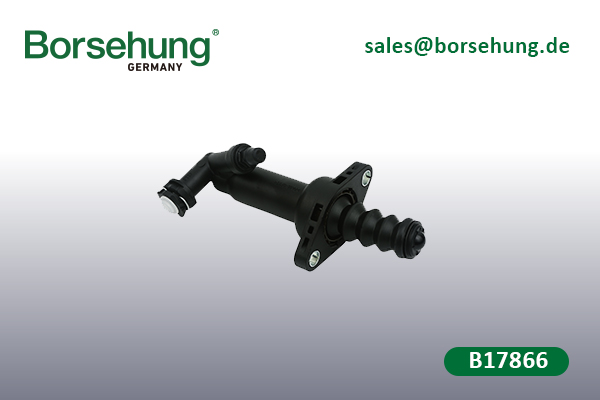1K0721261K1 is the Ref No. of B17866 clutch slave cylinder,The detailed information is as follows:

Name:clutch slave cylinder
Ref No.:1K0721261K
Borsehung number
Borsehung number:B17866
Applicable models of 1K0721261K:
Skoda: FAB15-/KAR18-/OCT04-18/RAP13-/SUP08-15/YET10-18
VW: BE06-10/BEC13-16/EOS06-16/GOC12-16/CA04-16/CC12-17/GOLF04-17/GOPL05-14/JE06-14/ART17-/GOSV14-/PA06-15/PACC09-12/SCI09-18/PO15-18/TOU03-16/TROC18-
SEAT: AT16-/ALT04-15/LE06-17/IB16-17/TO05-09;13-19
Audi: A1 15-18/A3 04-17/A3CA08-13;15-17/AQ2 17-/ATT07-15
What are the symptoms of a broken clutch slave cylinder?
With a broken clutch slave cylinder, the disengagement operation may be very difficult or even impossible when the driver presses the clutch. In particular, gear shifting could be hard and incomplete. Oil may also leak from the slave cylinder. It is recommended that a failed clutch slave cylinder assembly be replaced directly.
The clutch master cylinder and slave cylinder are designed as two hydraulic cylinders. The master cylinder has oil inlet and outlet pipes, while the slave cylinder only has one pipe. Once the clutch is pressed, the pressure in the master cylinder is transmitted to the slave cylinder, causing the latter to run. The clutch fork disengages the clutch compressing disc and the clutch cover from the flywheel, allowing gear shifting. After the clutch is released, the slave cylinder stops operation. The clutch compressing disc and the clutch cover engage with the flywheel, and enable continued power transmission. The oil in the slave cylinder will flow back to the oil reservoir. When the driver steps on the clutch pedal, the master cylinder is driven by the push rod, causing the oil to gain a higher pressure and flow via the hose into the slave cylinder. It then forces the pull rod in the slave cylinder to propel the release yoke and push forward the release bearing. When the driver releases the clutch pedal, the hydraulic force is cancelled. The release yoke will gradually resume its original position under the action of the return spring, and the clutch will become engaged again.
The clutch sits between the engine and the transmission. It is frequently used during startup and drive of the car. It gradually engages the engine and the transmission to ensure smooth start of the car. By temporarily interrupting the connection between the engine and the transmission, it facilitates gear shifting and reduces impact due to gear shifting operations. In the case of emergent braking, it serves a separation purpose, protecting the transmission and other drive parts against overload.

